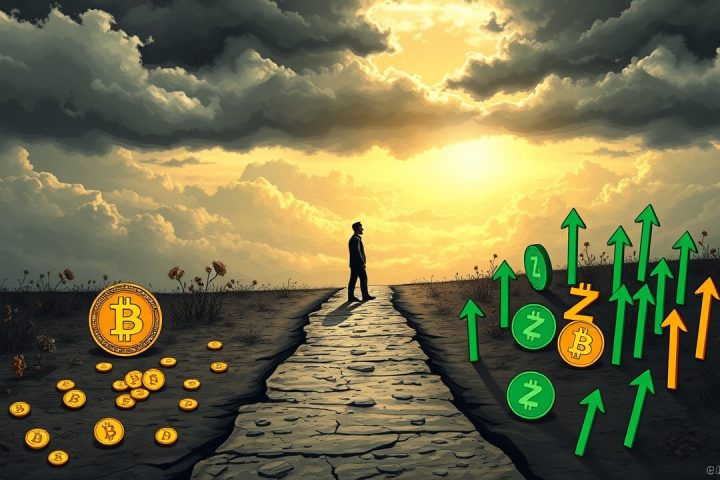Introduction
In a troubling trend for the cryptocurrency sector, signs indicate that the market is experiencing saturation, both financially and in terms of consumer interest. Analysis of Google Trends reveals that only Solana has seen a resurgence in search interest, while major cryptocurrencies such as Bitcoin, Ethereum, and Dogecoin have failed to regain the level of attention they enjoyed during the 2021 bull market. Even with Bitcoin reaching new price milestones and growing interest in exchange-traded funds (ETFs), the overall engagement appears low, suggesting that while cryptocurrencies have gained some mainstream acceptance as an investment, their use as functional currencies remains limited.
Market Dynamics
The current landscape shows that centralized exchanges, once vital for retail investors, are losing their grip. Many spot traders have exited, with some opting to engage in riskier perpetual contract trades, leading to a stagnation in new user acquisitions. This shift is further exacerbated by the emergence of spot ETFs that attract potential investors away from traditional exchanges. Additionally, yield farmers, who typically bring larger capital, are moving their focus off-chain in search of more stable income sources.
The enthusiasm surrounding NFTs and GameFi platforms has tempered as well, leaving many enthusiasts disillusioned. Airdrop hunters, known for their tenacity, are now expressing frustrations with projects that have failed to meet their commitments.
Statistical Insights
The statistics paint a worrying picture for the industry’s health. A mere fraction—about 10%—of users from major crypto exchanges have transitioned to active on-chain or wallet users. Despite significant public awareness of cryptocurrencies—92% according to a Consensys survey—the flattening of interest indicates a significant behavioral shift among potential investors. This waning interest reflects a broader trend where once-popular projects like NFTs and Dogecoin struggle to capture the mainstream audience.
Liquidity Challenges
Additionally, recent developments around the OM initiative, designed to bolster liquidity through tokens, have highlighted a troubling reality: even a sharp price increase has not resulted in commensurate demand. Within centralized exchanges, the absence of new buyers means that no amount of price manipulation can sustain market momentum.
Macroeconomic Factors
On a macroeconomic scale, the Federal Reserve’s aggressive quantitative tightening, which began in 2022, underscores these challenges. Efforts to stabilize the economy have not only drained liquidity from the market but also narrowed the type of participants willing to take risks—a critical requirement in the high-stakes world of cryptocurrencies.
Future Prospects
Looking to the future, the prospect of attracting buyers might depend less on crypto-enthusiasts and more on shifts in policy and actual demand. Regulations surrounding stablecoins could facilitate their use in international commerce, especially in regions suffering from currency instability. As stablecoins gain traction in economically troubled areas such as parts of Africa and Latin America, they could become essential tools for remittances and savings rather than instruments of speculation.
Conclusion
In summary, the present situation should not be viewed as a mere slump but rather a fundamental reconfiguration of the market. The divergence is becoming evident: one path is mired in speculative chatter with declining liquidity, while another is steadily moving towards utility-driven adoption of crypto products. This phase reflects not a failure of the concept itself but rather a necessary evolution towards a more sustainable model that prioritizes practical use over hype.




